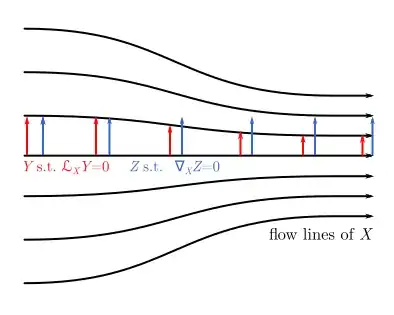I'm currently teaching a course that "applies" differential geometry to computational problems but doesn't have time to go through theorems/proofs in detail. We're taking a visual approach to help people see from a high level the differential geometry toolbox. I'd like to cover derivatives of vector fields on surfaces. Both the Lie and covariant derivatives come up in such a lecture.
Is there a clear/concrete example of a pair of vector fields $(X,Y)$ on the plane that illustrates (1) why the Lie derivative $\mathcal L_X Y$ is different from the covariant derivative $\nabla_X Y$ and (2) why both derivatives might be useful in different contexts?
I'm looking for a succinct, plot-able visualization to help explain what's going on.
